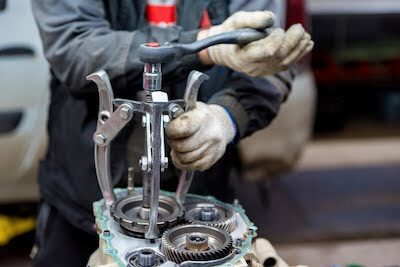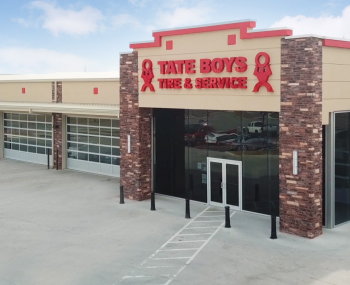Tulsa Auto Repair Guide to Common Steering, Battery, and Transmission Issues

Steering problems, car battery issues, or transmission troubles are common reasons a vehicle may be brought into an auto repair shop. Understanding these concerns and their causes can help save you time, money, and stress.
This comprehensive auto repair guide will address the most common steering, battery, and transmission problems, providing practical tips and actionable advice to help you navigate these issues effectively.
Whether you're a car enthusiast or simply want to be more informed about automotive repair, this guide empowers you with the knowledge you need to address these common vehicle challenges.
Understanding Common Steering Issues
Power steering is a crucial component of your vehicle; it makes steering effortless and smooth. However, various issues can arise, impacting the performance and safety of the steering system.
If you've noticed that your vehicle isn't handling as smoothly as it used to, there may be an underlying issue within the power steering system that needs to be addressed. Identifying the symptoms and understanding the causes of these problems can help you take the necessary steps to ensure your safety and the proper functioning of your vehicle.
Symptoms of Power Steering System Problems
- Difficulty turning: If you find it increasingly challenging to turn the steering wheel, especially at lower speeds or when maneuvering into parking spaces, there may be an issue with the power steering system or the steering rack.
- Strange noises: Unusual sounds such as squealing, whining, or groaning when turning the wheel could indicate problems with the power steering pump, fluid levels, or the steering mechanism.
- Vibration or shaking: Vibrations or shaking felt through the steering wheel, particularly at higher speeds, can be a sign of misaligned wheels, worn-out suspension components, or issues with the steering linkage.
- Uneven tire wear: Uneven tread wear on your tires, specifically if it's more pronounced on one side, can point to alignment issues, which directly affect steering performance.
Identifying Power Steering Fluid Leaks
Power steering fluid leaks are among the most common issues affecting the steering system's performance. One easy way to identify a leak is to check for fluid puddles or drips beneath the front of the vehicle. Newer power steering fluid can be clear, red, or amber. As it gets older, it will look reddish-brown to brown.
Another indicator of a fluid leak is a low power steering fluid level, which can be inspected through the reservoir in the engine compartment. Additionally, if you notice a whining noise or difficulty in steering when turning the steering wheel, it could be a sign of a potential fluid leak.
To address power steering fluid leaks, the mechanic will locate the source of the leak and assess the condition of the hoses, pump, and reservoir. In some cases, replacing worn-out seals or components may be necessary to rectify the issue. Regularly checking the power steering fluid level and promptly addressing any leaks can help prevent more severe steering problems.
Addressing Steering Wheel Vibrations
Steering wheel vibrations can be concerning; they affect the driving experience and may indicate underlying problems with the steering system. These vibrations are felt through the steering wheel and may be accompanied by an unusual noise or difficulty in steering.
A professional mechanic will inspect the tire pressure and the condition of the tires to address steering wheel vibrations. Uneven tire wear or an imbalance in tire pressure can lead to vibrations. Incorrect alignment affects tire wear and stresses the steering system, leading to handling issues and potential safety concerns.
Additionally, worn-out or damaged suspension components can cause steering wheel vibrations. Ensuring proper tire maintenance and promptly addressing any tire or suspension issues can help alleviate steering wheel vibrations and maintain a smooth driving experience.
Additional Causes of Steering Issues
There are a few other components that can cause steering issues, including the following:
- Worn-out tie rod ends: Over time, the tie rod ends can wear out, leading to loose steering, misalignment, and irregular tire wear.
- Faulty power steering pump: A malfunctioning power steering pump may result in hard steering, fluid leaks, and unusual noises when turning the wheel.
Understanding common steering issues and taking proactive measures to identify and address them can help ensure a safe and reliable driving experience. Regular maintenance and prompt attention to any signs of steering problems are vital in keeping your vehicle's system in optimal condition.
Managing Car Battery Troubles
Car batteries are essential to your vehicle's electrical system, providing the power needed to start the engine and run various electrical accessories. Understanding the signs of car battery issues, the reasons for car battery troubles, and the tips for car battery maintenance can help you avoid getting stranded due to a dead battery.

The Signs of a Failing Battery
- Difficulty starting the engine
- Dim headlights and interior lights
- Clicking sound when turning the key
- Dashboard warning light
- Corrosion on battery terminals
- Bloated battery case
Being proactive in identifying these warning signs can help ensure that your vehicle always has power and prevents unexpected breakdowns.
Reasons for Car Battery Troubles
- Age: As the car battery ages, its ability to hold a full charge diminishes.
- Extreme temperatures: Both hot and cold weather can affect car battery performance.
- Parasitic drain: Continuous power usage through electronic accessories when the engine is off can drain the battery.
- Loose or corroded connections: Poor connections can hinder the charging process.
Testing and Replacing a Car Battery
The mechanic will perform a voltage test using a multimeter to verify if your battery is the issue. If the reading is below 12.4 volts, it's time for a new car battery. When replacing the car battery, ensure the engine is off, detach the cables starting with the negative terminal, remove the battery, clean the terminal clamps, and install the new battery by reversing the removal process. Finally, use a battery terminal protector to prevent corrosion and prolong the battery's life.
Tips for Car Battery Maintenance
- Regularly check the battery for corrosion and clean the terminals.
- Keep the battery secure to prevent vibrations that can damage internal components.
- Test the battery's charge and replace it if it's old or showing signs of deterioration.
- Park in a garage or shaded area, especially during extreme temperatures, to prolong your car’s battery life.
- Check the charging system and battery regularly, especially before long trips.
Understanding these typical problems, replacing it when necessary, and taking proactive measures for car battery maintenance can help ensure a reliable and long-lasting battery for your vehicle.
Tackling Transmission Problems
Your transmission is one of the most important systems in the vehicle. It's what transfers the power from your engine to the wheels. So, if there is an issue with the transmission system, it's essential to promptly address it to prevent further damage and costly repairs.

Indications of Transmission Problems:
- Strange noises: If you notice unusual whining, clunking, or grinding noises while shifting gears, it could indicate a problem with the transmission.
- Slipping gears: Difficulty staying in gear or sudden gear shifts without input from the driver may point to transmission issues.
- Fluid leaks: Transmission fluid leaks, often identified by red or brown puddles under the vehicle, can signify a problem that needs attention.
- Warning lights: An illuminated check engine light or specific transmission warning light may indicate an issue with the transmission system.
Diagnosing Transmission Fluid Leaks
Transmission fluid leaks are a common problem that can affect the performance of your vehicle’s transmission. If you notice red or brown puddles under your car, it can indicate an active transmission fluid leak.
A low transmission fluid level can lead to gear slipping and rough shifting. To diagnose the source of the leak, a professional mechanic will inspect the transmission pan, seals, and gaskets for any signs of damage or wear. Ensuring that your transmission fluid is at the correct level and in good condition is essential for maintaining the overall performance of your vehicle’s transmission system.
Promptly addressing any leaks can prevent further damage to your transmission system and save you from costly repairs in the long run.
Resolving Gear Shifting Issues
When your vehicle experiences difficulty in shifting gears or if you notice any grinding or shaking during gear changes, it’s crucial to quickly address these issues. As mentioned above, one potential cause could be low transmission fluid levels, impacting the hydraulic pressure needed for smooth gear changes. Additionally, worn clutch components or a faulty solenoid can lead to gear-shifting problems.
A professional inspection will be needed to resolve these issues, followed by the potential replacement of worn components.
Tips for Preventing Transmission Failures:
- Regular maintenance: Follow the manufacturer's recommended schedule for fluid changes, filter replacements, and overall transmission inspections.
- Use the correct fluid: Ensure the correct transmission fluid is used, and monitor fluid levels to prevent overheating and wear.
- Smooth driving: Avoid abrupt acceleration, sudden braking, and aggressive driving, which can strain the transmission system.
- Cooling system maintenance: Keep the vehicle's cooling system in good condition to prevent excessive heat buildup in the transmission.
By staying alert to signs of transmission problems, understanding their potential causes, and following preventive maintenance measures, you can mitigate the risk of transmission failures and keep your vehicle running smoothly.
Make Tate Boys Your Top Local Auto Repair Shop
Understanding and addressing common steering, car battery, and transmission issues is crucial for maintaining the performance and safety of your vehicle. By staying proactive and being aware of the warning signs, you can prevent minor issues from escalating into costly repairs that put your vehicle in the auto repair shop more than it should be.

Regular maintenance, such as routine fluid checks and system inspections, can significantly extend the lifespan of your vehicle. When faced with any of the issues covered in this auto repair guide, it's essential to consult a qualified car repair professional to accurately diagnose and resolve the problem.
When you need a reliable, high-quality auto repair shop in the Tulsa area, you can count on the ASE-certified mechanics here at Tate Boys. Specializing in a wide range of automotive repair and car maintenance services, we proudly meet the needs of local drivers while offering an unbeatable customer service experience at reasonable prices you can afford.



